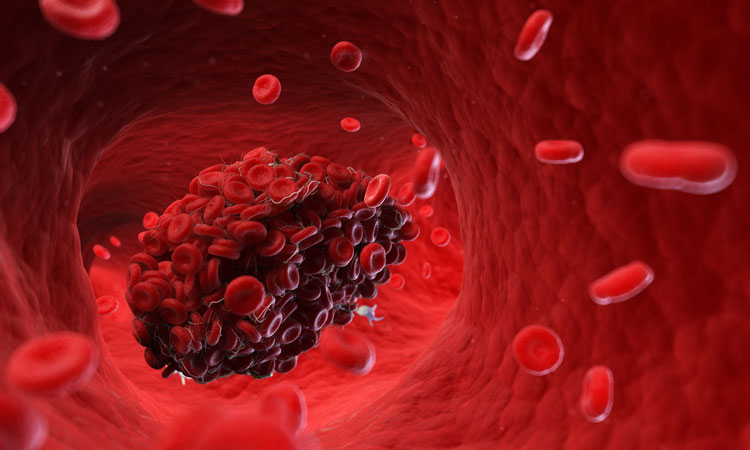Chemotherapy-free treatment for patients with blood cancer
Posted: 8 June 2023 | Dr Andy Souers | No comments yet
Dr Andy Souers highlights the unwavering commitment to finding an enhanced therapeutic approach that eliminates the need for chemotherapy in blood cancer treatment. This transformative discovery represents a significant leap forward in the way we combat this complex disease, offering new hope to countless patients worldwide.

The traditional standard of care for many cancer patients has been chemotherapy, which wipes out not only cancer cells but also healthy cells. In this article, Dr Andy Souers, distinguished research fellow at AbbVie in Oncology Discovery Research, discusses a 20-year quest for AbbVie researchers to find an enhanced therapeutic chemotherapy-free approach for blood cancer, that restores the body’s ability to fight cancer.
Cancer has an enormous impact on so many lives
As cancer researchers, the chance to improve the lives of patients provides incredible motivation. Our efforts are challenging, setbacks are very common, and success in the form of finding a new drug is inherently unlikely in our industry. But we learn much from scientific dead-ends and always remain inspired, as the stakes are very high for those suffering from cancer.
An important research area at AbbVie involves blood cancers, where our ultimate goal is to transform standards of care across these diseases and advance a dynamic cancer research and treatment pipeline. One example of our work is in the malignancy known as chronic lymphocytic leukaemia (CLL). This is a slow-growing type of blood cancer that affects more than 21,000 people in the US each year, making it one of the most common chronic leukaemia’s among adults.1 Before the discovery of more targeted drugs, a person diagnosed with CLL faced a tough road, with chemotherapy, radiation and bone marrow transplant being the primary treatment options. Greater understanding of the disease and the introduction of immunotherapy improved five-year survival rates from less than 50 percent in the mid-1970s to approximately 70 percent by the early-mid 2000s.2 However, treatment options were still limited and often came with severe side effects.
When we initiated our blood cancer research efforts, the existing treatment options were somewhat effective at reducing the CLL cells but killed healthy cells as well. Our vision was to give patients another option that would move away from chemotherapy-based treatments and closer to what we call a “targeted” therapy, meaning one with a more selective impact on the disease that spared normal cells as much as possible. Our goal was to improve efficacy, reduce toxicity and offer patients the chance for a treatment-free period.
We were interested in discovering the various processes within the cell that were altered in cancer. This led us to investigate apoptosis, which is a normal process whereby aged or damaged cells undergo a programmed cell death. This process allows the body to maintain a healthy balance of functioning cells and organs. In cancer cells, however, this programmed death process is effectively shut off, which allows the cancer to continue to build up in the body and even resist treatments such as chemotherapy.
We asked if it was possible to create a molecule that could get into cancer cells and turn the cell death process back on. This question took us down the road of trying to target B-cell lymphoma 2 (BCL-2), a pro-survival protein that often becomes overabundant in cancer cells, thereby providing them with a distinct survival advantage. The basic idea was that inhibition of the BCL-2 proteins within these cancer cells would restore the natural cell death process and ultimately kill off the leukaemia.
The challenge, however, was finding a place to start. At the time, the BCL-2 family of proteins were considered “undruggable” targets by the biopharmaceutical industry. Fortunately, the culture at AbbVie, where exploring any and all research avenues in the pursuit of benefitting patients is the norm, gave us a distinct advantage.
Ultimately, we broke away from the normal rules that typically govern our chemistry and biology pursuits. These early efforts took several years and met with multiple failures. However, demonstrating the incredible tenacity of our scientists, we eventually discovered a molecule that could selectively kill cancer cells by inhibiting BCL-2 and the related protein BCL-XL. Our early discovery was an exhilarating advance, as the molecule was effective in reducing CLL burden in patients. While this was an exciting time for us and the CLL community, we also identified a new hurdle: inhibition of BCL-XL by our molecule led to a reduction in platelets. These platelets play a crucial role in blood clotting and once they dip below a certain level, a patient’s blood-clotting ability can become compromised, and they would need to halt drug treatment until the platelets were restored.
This discovery garnered a new hypothesis: if we could invent a compound that inhibits BCL-2 but not BCL-XL, we could treat leukaemia patients without causing significant loss of platelets. On paper, this hypothesis made intuitive sense, since blood cancers such as CLL predominantly rely on BCL-2 alone for survival. However, the reality was anything but straightforward. In fact, discovering such a compound had never been done before. It required going back to the drawing board to find the key to a lock we couldn’t even see.
After eight months of unsuccessful efforts, one of our scientists created an X-ray structure that completely altered the trajectory of our programme. It resulted in a closer understanding of what that lock actually looked like. Those very subtle differences between the BCL-2 and BCL-XL proteins gave us clues of how to design the specific key; thus armed, we returned to the lab and attempted to make molecules that would mimic what we saw in the X-ray structure. After two intense months of research, we discovered what we had been looking for— a molecule that could selectively inhibit the BCL-2 protein.
Now that we had this prototype, we still had a journey ahead of us to bring this to patients. Throughout this process, we were working around the clock – seven days a week, nights and weekends. Once we had our desired drug product, we were convinced that ultimately our objective could be met.
We were working around the clock – seven days a week, nights and weekends
As thrilling as the chemistry journey had been, the most important part was bringing this new therapeutic approach to the first patients in 2011. The ultimate BCL-2-inhibiting medicine has since helped countless patients living with blood cancers, including those with acute myeloid leukaemia as well as CLL. Having the opportunity to make a difference in the lives of patients is the ultimate dream of any researcher, and we remain incredibly grateful for the experience.
Author Bio:
 Andy Souers
Andy Souers
Andy Souers, PhD, is a Distinguished Research Fellow on the Oncology Discovery Research team at AbbVie. Andy and his team leverage their combined expertise to find new ways to improve the lives of people with cancer. He received his Ph.D. in Organic Chemistry from the University of California, Berkeley.
References
- Parikh SA, Gale RP, Kay NE. Chronic lymphocytic leukemia in 2020: a surfeit of riches? Leukemia. 2020 Aug;34(8):1979-1983. doi: 10.1038/s41375-020-0852-7. Epub 2020 May 11. PMID: 32393844; PMCID: PMC8130839.
- Leukemia & Lymphoma Society. Facts and Statistics Overview. Available at: https://www.lls.org/facts-and-statistics/facts-and-statistics-overview.
Related topics
Chemotherapy, Drug Delivery, Drug Development, Drug Discovery, Drug Discovery Processes, Immuno-oncology, Immuno-oncology therapeutics, Immunology, Oncology, Targets
Related conditions
blood cancers, Cancer
Related organisations
AbbVie
Related people
Dr Andy Souers







